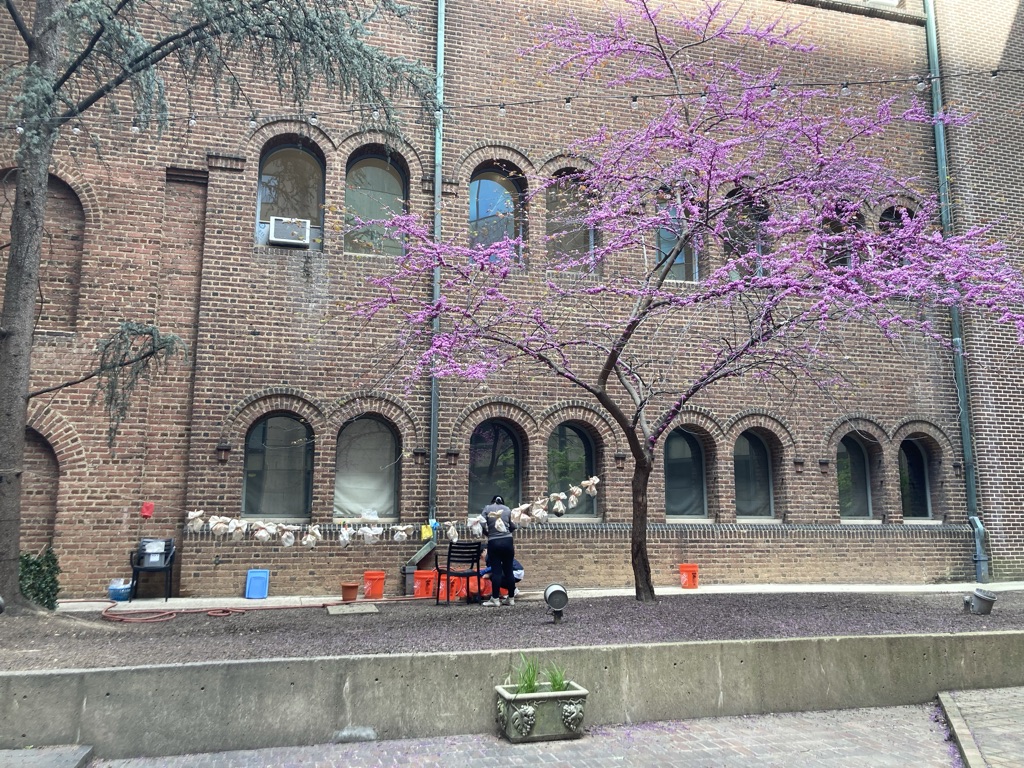Dr. Cristina Castillo (standing, far right) with her team who worked on floating the Archaeobotany samples
When most people think of archaeology, they think about buried remains of buildings, or perhaps discovering skeletons or mummies. However, archaeology also has a nature-loving side, which would include archaeobotany. Archaeobotany is the study of excavated plants and how people used them in the past.
Although Dr. Srisanga is studying a whole specimen, much of Year of Botany’s work also looked at much smaller samples, including seeds and particulate plant remains. To study these, Dr. White’s museum blog post writes:
Foremost among these dimensions is archaeobotany and its important focus on studying ancient seeds (called “macrobotanical remains”) recovered during excavations. Specialists study those remains, and in 2024, the Penn Museum’s Ban Chiang Project was able to bring archaeobotanist Dr. Cristina Castillo from University College London to the Museum to conduct “flotation” of bags of dirt that had lived in the Penn Museum subbasement since almost 40 years ago. As the Director of the Ban Chiang Project at Penn, I have been a “mother hen” to those bags over the decades, preserving them for the opportunity for just such a study.

Kittiyaporn Sukprasong, an intern from Mahidol University, floating a sediment sample from Ban Chiang

Many samples of flot drying in the spring breeze in the Museum courtyard before further analysis
The analyses of the flot (flotation results) will allow Cristina Castillo to study farming patterns in certain areas, plant population density for things like weeds, and other insights.
The Penn Museum’s full post can be accessed here: https://www.penn.museum/blog/the-science-of-seeds/

